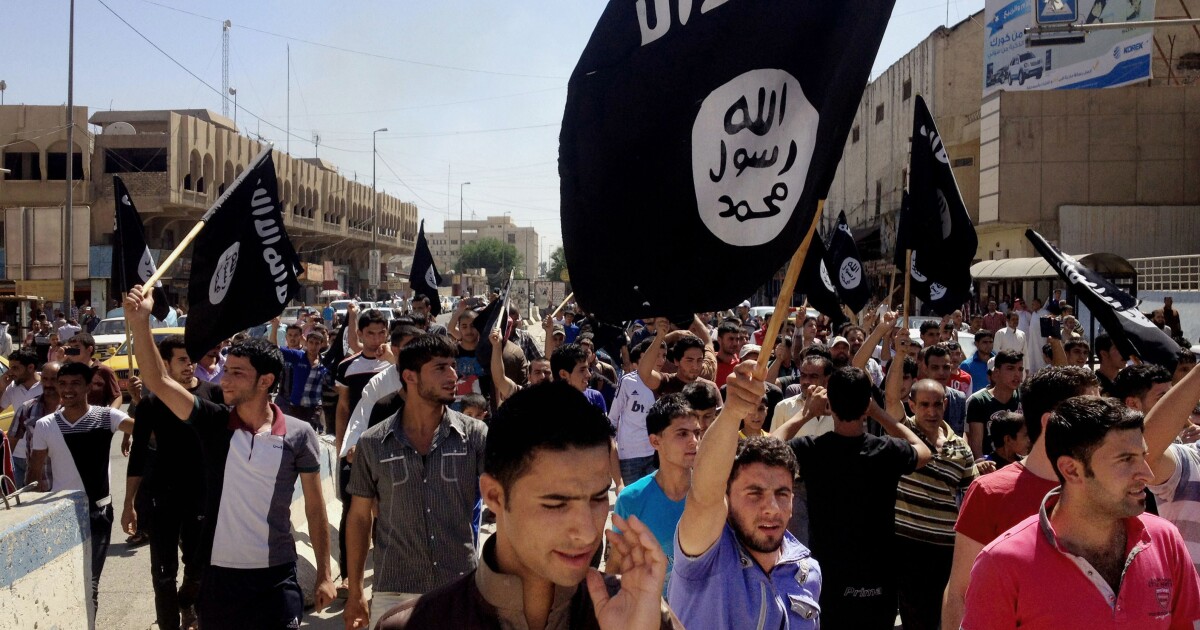

U.S. Central Command conducted a total of 313 operations against the Islamic State in Iraq and Syria in the 2022 calendar year that resulted in the death or detention of more than a thousand ISIS operatives.
CENTCOM conducted 108 partnered operations with their Syrian Democratic Forces (SDF) allies and 14 unilateral missions within their borders that resulted in the detention of 215 ISIS operatives and killed 466 of them. They also conducted 191 joint operations in Iraq, where one year ago this month, the U.S. transitioned into an advisory and assisting role for the Iraqi Special Forces, which resulted in the detention of 159 ISIS operatives and the deaths of at least 220 more.
‘PERFECT STORM BREWING’ IN SYRIAN REFUGEE CAMP, PRISON FOR ‘REEMERGENCE OF ISIS,’ GRAHAM WARNS
They released all of this data on Thursday as a part of a year-in-review summation of their operations against the Islamic State.
“The emerging, reliable and steady ability of our Iraqi and Syrian partner forces to conduct unilateral operations to capture and kill ISIS leaders allows us to maintain steady pressure on the ISIS network,” said Maj. Gen. Matt McFarlane, commander of Combined Joint Task Force – Operation Inherent Resolve.
Last week, Gen. Michael “Erik” Kurilla, CENTCOM commander, told reporters, “While we have significantly degraded [ISIS’s] capability, the vile ideology remains uncontained and unconstrained.”
Last February, special operations forces conducted a raid that resulted in the death of Abu Ibrahim al Hashimi al Qurayshi, who had taken over the head of the Islamic State following the death of Abu Bakr al Baghdadi in 2019.
Kurilla breaks down ISIS into three categories: The current generation of ISIS leaders and operatives that the U.S. is actively trying to defeat; the ISIS fighters who are in detention centers throughout Iraq and Syria that could escape and rejoin the fight; and the next generation of possible ISIS fighters.
“First, ISIS at large. This is the current generation of ISIS leaders and operatives we are currently fighting in Iraq and Syria. While we have significantly degraded its capability, the vile ideology remains unconstrained. We must continue to pressure ISIS through our partnered operations,” he explained. “The second category is ISIS in detention. There is a literal ‘ISIS army’ in detention in Iraq and Syria. There are, today, more than 10,000 ISIS leaders and fighters in detention facilities throughout Syria and more than 20,000 ISIS leaders and fighters in detention facilities in Iraq.”
Nearly a year ago, there was a prison break at the Al-Hasakah prison in Syria in which more than 420 ISIS fighters were killed while more than 120 of the U.S. partnered forces were killed as well.
Timothy Betts, the U.S special envoy to the Global Coalition to Defeat ISIS, described this summer that specific facility as being “full of hardened fighters,” though he also said he wasn’t “aware of any significant ISIS figures that were amongst those that are no longer there.”
“Finally,” Kurilla continued, “we have the potential next generation of ISIS. These are the more than 25,000 children in the al-Hol camp who are in danger. These children in the camp are prime targets for ISIS radicalization. The international community must work together to remove these children from this environment by repatriating them to their countries or communities of origin while improving conditions in the camp.”
The al-Hol refugee camp has a population of roughly 55,000 consisting mainly of the wives and children of the Islamic State fighters that are in the prisons, and there is rampant radicalization of children in the camp. U.S. officials, Kurilla included, have said that the best way to mitigate the threat of radicalizing the next generation of ISIS fighters in al-Hol is through the repatriation of those citizens to their country of origin.
“The most durable solution to the challenges of these detention centers and the displaced person camps is for countries of origin to repatriate, rehabilitate, reintegrate, and, where appropriate, prosecute their nationals residing in northeast Syria,” Dana Stroul, the deputy assistant secretary of defense for the Middle East, said in July, while Kurilla added on Thursday, “The international community must work together to remove these children from this environment by repatriating them to their countries or communities of origin while improving conditions in the camp.”
Another area of concern is Turkish threats of invading northern Syria, which could jeopardize the U.S. and their Syrian Democratic Forces partners’ fight against ISIS.
Ankara has accused the Kurds of being responsible for a deadly bombing in Istanbul last month, which prompted Turkey’s threat of a ground invasion that killed at least six people and wounded dozens of others.
CLICK HERE TO READ MORE FROM THE WASHINGTON EXAMINER
“I am very, very concerned about that because that can destabilize the region and call our SDF partners off of the prisons,” Kurilla said last week. “They have about 28 prisons across northern Syria. It could cause them to pull off of those and put those at risk. If you remember, one of the prisons last year, in January of last year, there was a breakout of almost 4,000 ISIS detainees. It also can put at risk the security down at al-Hol Camp. So anything we can do to de-escalate the situation and prevent that incursion by the Turks would be important.”
CENTCOM has conducted a multitude of raids this month that has resulted in the deaths or detention of a handful of ISIS operatives that were planning attacks, including some who sought to conduct missions at the al-Hol camp.






